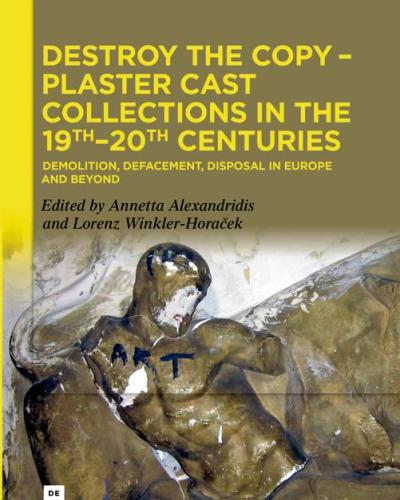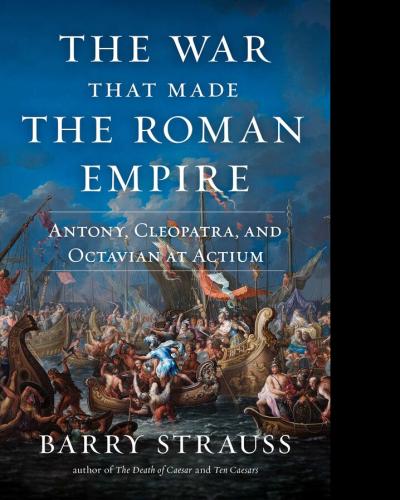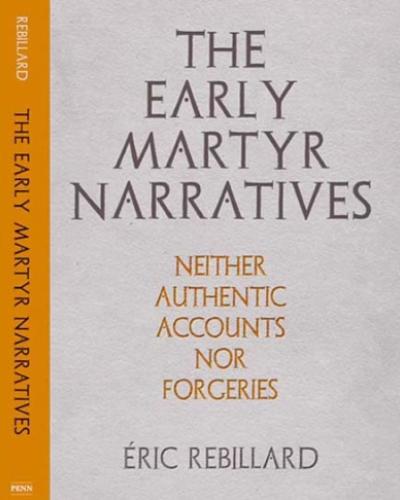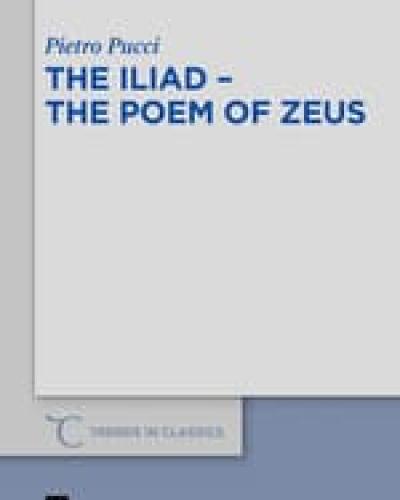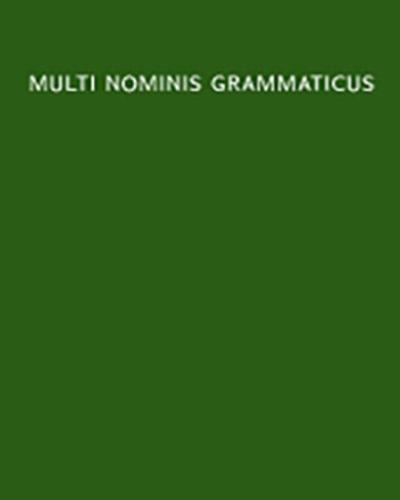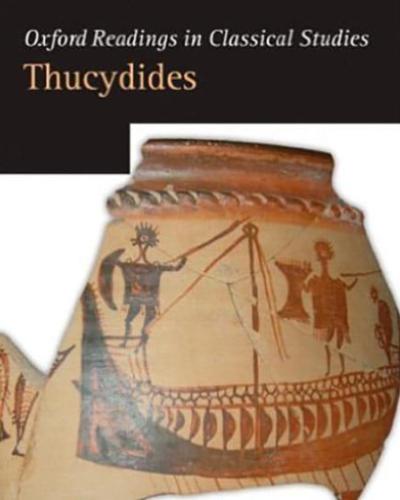The Mechanical Tradition of Hero of Alexandria
Hero of Alexandria was a figure of great importance not only for ancient technology but also for the medieval and early modern traditions that drew on his work. In this book Courtney Roby presents Hero's key strategies for developing, solving, and contextualizing technical problems, not only in his own lifetime but as an influential tradition of creating accessible technical treatises spanning multiple disciplines. While Hero's historical biography is all but impossible to reconstruct, she examines “Hero” as a corpus, a textual tradition of technical problem-solving capable of incorporating textual transformations like interpolation, epitomization, and translation, as well as intermedial transformation from text to artifact. Key themes include ancient and early modern technical readerships, the relationship between mathematics and mechanics, the materiality of manuscript and printed texts, and the shifting cultural contexts for scientific and technical literature.
Destroy the Copy – Plaster Cast Collections in the 19th–20th Centuries
Title:
Destroy the Copy – Plaster Cast Collections in the 19th–20th Centuries: Demolition, Defacement, Disposal in Europe and Beyond
Editor:
Publisher:
De Gruyter
Year:
2022
Based on two international conferences held at Cornell University and the Freie Universität of Berlin in 2010 and 2015, this volume is the first ever to explicitly address the destruction of plaster cast collections of ancient Mediterranean and Western sculpture. Focusing on Europe, the Americas, and Japan, art historians, archaeologists and a literary scholar discuss how different museum and academic traditions – national as well as disciplinary –, notions of value and authenticity, or colonialism impacted the fate of collections. The texts offer detailed documentation of degrees of destruction by spectacular acts of defacement, demolition, discarding, or neglect. They also shed light on the accompanying discourses regarding aesthetic ideals, political ideologies, educational and scholarly practices, or race. With destruction being understood as a critical part of reception, the histories of cast collections defy the traditional, homogenous narrative of rise and decline. Their diverse histories provide critical evidence for rethinking the use and display of plaster cast collections in the contemporary moment.
The War That Made the Roman Empire
Following Caesar’s assassination and Mark Antony’s defeat of the conspirators who killed Caesar, two powerful men remained in Rome—Antony and Caesar’s chosen heir, young Octavian, the future Augustus. When Antony fell in love with the most powerful woman in the world, Egypt’s ruler Cleopatra, and thwarted Octavian’s ambition to rule the empire, another civil war broke out. In 31 BC one of the largest naval battles in the ancient world took place—more than 600 ships, almost 200,000 men, and one woman—the Battle of Actium. Octavian prevailed and subsequently defeated Antony and Cleopatra, who eventually committed suicide.
The Battle of Actium had great consequences for the empire. Had Antony and Cleopatra won, the empire’s capital might have moved from Rome to Alexandria, Cleopatra’s capital, and Latin might have become the empire’s second language after Greek, which was spoken throughout the eastern Mediterranean, including Egypt.
In this riveting and exciting history, Barry Strauss, ancient history authority, describes this consequential battle with the drama and expertise that it deserves. The War That Made the Roman Empire is essential history that features three of the greatest figures of the ancient world.
Ancient Greek Lists: Catalogue and Inventory Across Genres
Ancient Greek Lists brings together catalogic texts from a variety of genres, arguing that the list form was the ancient mode of expressing value through text. Ranging from Homer's Catalogue of Ships through Attic comedy and Hellenistic poetry to temple inventories, the book draws connections among texts seldom juxtaposed, examining the ways in which lists can stand in for objects, create value, act as methods of control, and even approximate the infinite. Athena Kirk analyzes how lists come to stand as a genre in their own right, shedding light on both under-studied and well-known sources to engage scholars and students of Classical literature, ancient history, and ancient languages.
The Early Martyr Narratives
In The Early Martyr Narratives, Rebillard considers only accounts of Christian martyrs supposed to have been executed before 260, and only those whose existence is attested in sources that can be dated to before 300. The resulting small corpus contains no texts in the form of legal protocols, traditionally viewed as the earliest, most official and authentic records, nor does it include any that can be dated to a period during which persecution of Christians is known to have taken place. Rather than deduce from this that they are forgeries written for the sake of polemic or apologetic, Rebillard demonstrates how the literariness of the narratives creates a fictional complicity that challenges and complicates any claims of these narratives to be truthful.
The Socio-Economics of Roman Storage
In a pre-industrial world, storage could make or break farmers and empires alike. How did it shape the Roman Empire? The Socio-Economics of Roman Storage cuts across the scales of farmer and state to trace the practical and moral reverberations of storage from villas in Italy to silos in Gaul, and from houses in Pompeii to warehouses in Ostia. Following on from the material turn, an abstract notion of “surplus” makes way for an emphasis on storage’s material transformations (e.g. wine fermenting; grain degrading; assemblages forming), which actively shuffle social relations and economic possibilities, and are a sensitive indicator of changing mentalities. This archaeological study tackles key topics, including the moral resonance of agricultural storage; storage as a contested register of future-making during and after conquest; the geography of knowledge in domestic settings; the supply of the metropolis of Rome; and the question of how empires scale up. It will be of interest to scholars and students of Roman archaeology and history, as well as anthropologists who study the links between the scales of farmer and state.
How to Drink: A Classical Guide to the Art of Imbibing
Is there an art to drinking alcohol? Can drinking ever be a virtue? The Renaissance humanist and neoclassical poet Vincent Obsopoeus (ca. 1498–1539) thought so. In the winelands of sixteenth-century Germany, he witnessed the birth of a poisonous new culture of bingeing, hazing, peer pressure, and competitive drinking. Alarmed, and inspired by the Roman poet Ovid’s Art of Love, he wrote The Art of Drinking (De Arte Bibendi) (1536), a how-to manual for drinking with pleasure and discrimination. In How to Drink, Michael Fontaine offers the first proper English translation of Obsopoeus’s text, rendering his poetry into spirited, contemporary prose and uncorking a forgotten classic that will appeal to drinkers of all kinds and (legal) ages.
Arguing that moderation, not abstinence, is the key to lasting sobriety, and that drinking can be a virtue if it is done with rules and limits, Obsopoeus teaches us how to manage our drinking, how to win friends at social gatherings, and how to give a proper toast. But he also says that drinking to excess on occasion is okay—and he even tells us how to win drinking games, citing extensive personal experience.
Complete with the original Latin on facing pages, this sparkling work is as intoxicating today as when it was first published.
Outline of the Historical and Comparative Grammar of Latin
The second edition of Outline of the Historical and Comparative Grammar of Latin updates and expands by 60 pages the first edition of 2009, now the standard reference for the history of the Latin language. This book details the development of Latin from its Proto-Indo-European roots down to its modern forms, the Romance languages. The book also offers concise overviews of Latin synchronic phonology, the reconstructed pronunciation of Classical Latin, derivational morphology, some developments in syntax, the position of Latin within the Indo-European languages, language contact, and Etruscan grammar and texts. It can be purchase directly from Beech Stave Press.
Domesticating Empire: Egyptian Landscapes in Pompeian Gardens
Domesticating Empire is the first contextually-oriented monograph on Egyptian imagery in Roman households. Caitlín Barrett draws on case studies from Flavian Pompeii to investigate the close association between representations of Egypt and a particular type of Roman household space: the domestic garden. Through paintings and mosaics portraying the Nile, canals that turned the garden itself into a miniature "Nilescape," and statuary depicting Egyptian themes, many gardens in Pompeii offered ancient visitors evocations of a Roman vision of Egypt. Simultaneously faraway and familiar, these imagined landscapes made the unfathomable breadth of empire compatible with the familiarity of home. In contrast to older interpretations that connect Roman "Aegyptiaca" to the worship of Egyptian gods or the problematic concept of "Egyptomania," a contextual analysis of these garden assemblages suggests new possibilities for meaning. In Pompeian houses, Egyptian and Egyptian-looking objects and images interacted with their settings to construct complex entanglements of "foreign" and "familiar," "self" and "other." Representations of Egyptian landscapes in domestic gardens enabled individuals to present themselves as sophisticated citizens of empire. Yet at the same time, household material culture also exerted an agency of its own: domesticizing, familiarizing, and "Romanizing" once-foreign images and objects. That which was once imagined as alien and potentially dangerous was now part of the domus itself, increasingly incorporated into cultural constructions of what it meant to be "Roman." Featuring brilliant illustrations in both color and black and white, Domesticating Empire reveals the importance of material culture in transforming household space into a microcosm of empire.
Ten Caesars
Barry Strauss’s Ten Caesars is the story of the Roman Empire from rise to reinvention, from Augustus, who founded the empire, to Constantine, who made it Christian and moved the capital east to Constantinople.
During these centuries Rome gained in splendor and territory, then lost both. The empire reached from modern-day Britain to Iraq, and gradually emperors came not from the old families of the first century but from men born in the provinces, some of whom had never even seen Rome. By the fourth century, the time of Constantine, the Roman Empire had changed so dramatically in geography, ethnicity, religion, and culture that it would have been virtually unrecognizable to Augustus.
In the imperial era Roman women—mothers, wives, mistresses—had substantial influence over the emperors, and Strauss also profiles the most important among them, from Livia, Augustus’s wife, to Helena, Constantine’s mother. But even women in the imperial family faced limits and the emperors often forced them to marry or divorce for purely political reasons.
Rome’s legacy remains today in so many ways, from language, law, and architecture to the seat of the Roman Catholic Church. Strauss examines this enduring heritage through the lives of the men who shaped it: Augustus, Tiberius, Nero, Vespasian, Trajan, Hadrian, Marcus Aurelius, Septimius Severus, Diocletian and Constantine. Over the ages, they learned to maintain the family business—the government of an empire—by adapting when necessary and always persevering no matter the cost. Ten Caesars is essential history as well as fascinating biography.
The Iliad – the Poem of Zeus
The scholarly tendency has too often weakened the conspicuous novelty and originality that characterizes Zeus in the Iliad. This book remedies that tendency and depicts the extraordinary figure of Zeus: lord (or impersonation) of lightning and thunders, exclusive master of human destiny --and therefore of human history—and chief of Olympus. This unique personality endowed with polyvalent powers represents itself the conflict between superhuman moral indifference for mortal destiny and anthropomorphic feelings for human beings: he both preordains the death of his son and weeps on his demise. Zeus embodies the Mysterium tremendum. This new Zeus cannot glance at the past image that the tradition painted of him without smiling at its simplicity and disrespect: a parodic or amusing tone surrounds him as he refers or is referred to aspects of his traditional image. The great characters of the Poem give two wise responses to Zeus, lord of destiny: "heroic death" or serene acceptance. We, the readers, are expected to react in the same way.
The Frame in Classical Art: A Cultural History
The frames of classical art are often seen as marginal to the images that they surround. Traditional art history has tended to view framing devices as supplementary 'ornaments'. Likewise, classical archaeologists have often treated them as tools for taxonomic analysis. This book not only argues for the integral role of framing within Graeco-Roman art, but also explores the relationship between the frames of classical antiquity and those of more modern art and aesthetics. Contributors combine close formal analysis with more theoretical approaches: chapters examine framing devices across multiple media (including vase and fresco painting, relief and free-standing sculpture, mosaics, manuscripts and inscriptions), structuring analysis around the themes of 'framing pictorial space', 'framing bodies', 'framing the sacred' and 'framing texts'. The result is a new cultural history of framing - one that probes the sophisticated and playful ways in which frames could support, delimit, shape and even interrogate the images contained within.
Greek and Latin Narratives about the Ancient Martyrs
Greek and Latin Narratives about the Ancient Martyrs provides a collection, with facing-page translations, of Greek and Latin Christian martyr narratives. While Herbert Musurillo's authoritative collection The Acts of the Christian Martyrs (1972) aimed to gather the most 'authentic' and 'reliable' accounts of early Christian martyrdom, this extensive volume provides a textual basis for the study of martyr narratives without making assumptions about their date of composition or their authenticity. It focuses on the 'ancient martyrs', i.e. martyrs executed before 260, and examines which of their texts was known to Eusebius or to Augustine. Introductions describe the hagiographical dossier of each martyr with crucial information about the manuscript tradition of the different texts and provide a terminus ante quem for their composition based only on external evidence.
Cosmos and Community in Early Medieval Art
In the rapidly changing world of the early Middle Ages, depictions of the cosmos represented a consistent point of reference across the three dominant states—the Frankish, Byzantine, and Islamic Empires. As these empires diverged from their Greco-Roman roots between 700 and 1000 A.D. and established distinctive medieval artistic traditions, cosmic imagery created a web of visual continuity, though local meanings of these images varied greatly. Benjamin Anderson uses thrones, tables, mantles, frescoes, and manuscripts to show how cosmological motifs informed relationships between individuals, especially the ruling elite, and communities, demonstrating how domestic and global politics informed the production and reception of these depictions. The first book to consider such imagery across the dramatically diverse cultures of Western Europe, Byzantium, and the Islamic Middle East, Cosmos and Community in Early Medieval Art illuminates the distinctions between the cosmological art of these three cultural spheres, and reasserts the centrality of astronomical imagery to the study of art history.
Euripides' Revolution under Cover
In this provocative book, Pietro Pucci explores what he sees as Euripides's revolutionary literary art. While scholars have long pointed to subversive elements in Euripides’s plays, Pucci goes a step further in identifying a Euripidean program of enlightened thought enacted through carefully wrought textual strategies. The driving force behind this program is Euripides’s desire to subvert the traditional anthropomorphic view of the Greek gods—a belief system that in his view strips human beings of their independence and ability to act wisely and justly. Instead of fatuous religious beliefs, Athenians need the wisdom and the strength to navigate the challenges and difficulties of life.Throughout his lifetime, Euripides found himself the target of intense criticism and ridicule. He was accused of promoting new ideas that were considered destructive. Like his contemporary, Socrates, he was considered a corrupting influence. No wonder, then, that Euripides had to carry out his revolution "under cover." Pucci lays out the various ways the playwright skillfully inserted his philosophical principles into the text through innovative strategies of plot development, language and composition, and production techniques that subverted the traditionally staged anthropomorphic gods.
The Death of Caesar
The exciting, dramatic story of one of history’s most famous events—the death of Julius Caesar—now placed in full context of Rome’s civil wars by eminent historian Barry Strauss.
Thanks to William Shakespeare, the death of Julius Caesar is the most famous assassination in history. But what actually happened on March 15, 44 BC is even more gripping than Shakespeare’s play. In this thrilling new book, Barry Strauss tells the real story.
Shakespeare shows Caesar’s assassination to be an amateur and idealistic affair. The real killing, however, was a carefully planned paramilitary operation, a generals’ plot, put together by Caesar’s disaffected officers and designed with precision. There were even gladiators on hand to protect the assassins from vengeance by Caesar’s friends. Brutus and Cassius were indeed key players, as Shakespeare has it, but they had the help of a third man—Decimus. He was the mole in Caesar’s entourage, one of Caesar’s leading generals, and a lifelong friend. It was he, not Brutus, who truly betrayed Caesar.
Caesar’s assassins saw him as a military dictator who wanted to be king. He threatened a permanent change in the Roman way of life and in the power of senators. The assassins rallied support among the common people, but they underestimated Caesar’s soldiers, who flooded Rome. The assassins were vanquished; their beloved Republic became the Roman Empire.
An original, fresh perspective on an event that seems well known, Barry Strauss’s book sheds new light on this fascinating, pivotal moment in world history.
How Things Make History
Bright red terra sigillata pots dating to the first three centuries CE can be found throughout the Western Roman provinces. The pots' widespread distribution and recognisability make them key evidence in the effort to reconstruct the Roman Empire's economy and society. Drawing on recent ideas in material culture, this book asks a radically new question: what was it about the pots themselves that allowed them to travel so widely and be integrated so quickly into a range of contexts and practices? To answer this question, Van Oyen offers a fresh analysis in which objects are no longer passive props, but rather they actively shape historical trajectories.
Technical Ekphrasis in Greek and Roman Science and Literature: The Written Machine between Alexandria and Rome
Ekphrasis is familiar as a rhetorical tool for inducing enargeia, the vivid sense that a reader or listener is actually in the presence of the objects described. This book focuses on the ekphrastic techniques used in ancient Greek and Roman literature to describe technological artifacts. Since the literary discourse on technology extended beyond technical texts, this book explores 'technical ekphrasis' in a wide range of genres, including history, poetry, and philosophy as well as mechanical, scientific, and mathematical works. Technical authors like Philo of Byzantium, Vitruvius, Hero of Alexandria, and Claudius Ptolemy are put into dialogue with close contemporaries in other genres, like Diodorus Siculus, Cicero, Ovid, and Aelius Theon. The treatment of 'technical ekphrasis' here covers the techniques of description, the interaction of verbal and visual elements, the role of instructions, and the balance between describing the artifact's material qualities and the other bodies of knowledge it evokes.
Group Identity and Religious Individuality in Late Antiquity
To understand the past, we necessarily group people together and, consequently, frequently assume that all of its members share the same attributes. In this ground-breaking volume, Eric Rebillard and J?rg R?pke bring renowned scholars together to challenge this norm by seeking to rediscover the individual and to explore the dynamics between individuals and the groups to which they belong.
Joannes Burmeister, Aulularia and Other Inversions of Plautus
Joannes Burmeister of L?neburg (1576-1638) was among the greatest Neo-Latin poets of the German Baroque. His masterpieces, now mostly lost, are Christian ?inversions? of the classical Roman comedies of Plautus. With only minimal changes in language and none in meter, each transforms Plautus? pagan plays into comedies based on biblical themes. Singular Renaissance curiosities in their day, they have since been entirely forgotten. This volume offers the first critical edition of the newly discovered Aulularia (1629), which exists in a sole copy, and the fragments of Mater-Virgo (1621), which adapts Plautus? Amphitryo to show the Nativity of Jesus. The introduction offers reconstructions of Susanna (based on Casina) and Asinaria (1625), his two lost or unpublished inversions of Plautus. It also provides the only biography of Burmeister based on archival sources, along with discussions of his inimitable Latinity and the perilous context of war and witch burning in which he wrote. Scholars of early modern literature will take special interest in the poetic German plot summaries (also translated), while students of the Thirty Years War or the Holy Roman Empire will want to add Burmeister's contemporary view of military abuses to those later expressed in Grimmelshausen's Simplicius Simplicissimus.
Philostratus, Heroicus. Gymnasticus. Discourses 1 and 2
In this volume, Heroicus and Gymnasticus, two works of equal creativity and sophistication, together with two brief Discourses (Dialexeis), complete the Loeb Classical Library edition of Philostratus's writings. Jeffrey Rusten proposes a new translation of the Heroicus, a conversation in a vineyard amid ruins of the Protesilaus shrine (opposite Troy on the Hellespont), between a wise and devout vinedresser and an initially skeptical Phoenician sailor, about the beauty, continuing powers, and worship of the Homeric heroes.
The Oxford Handbook of Greek and Roman Comedy
The Oxford Handbook of Greek and Roman Comedy marks the first comprehensive introduction to and reference work for the unified study of ancient comedy. From the birth of comedy in Greece to its end in Rome, from the Hellenistic diffusion of performances after the death of Menander to its artistic, scholarly, and literary receptions in the later Roman Empire, no topic is neglected.
A Test of Time and A Test of Time Revisited: The Volcano of Thera and the Chronology and History of the Aegean and East Mediterranean in the mid Second Millennium BC
The eruption of the Thera (Santorini) volcano in the Aegean Sea in the mid-second millennium BC was a clearly defined, specific moment in Aegean and east Mediterranean prehistory that impacted on all the major cultures of the region. The effects of the eruption have been linked with the destruction of the Minoan palace civilisation of Crete, the legend of Atlantis, and even events described in the Biblical account of the Exodus. Scientists have studied the remains of the volcano and traced eruption products and far-flung climatic impacts throughout the east Mediterranean and in ice cores and tree-ring data. At Akrotiri, a major prehistoric town buried by the eruption, archaeologists unearthed the partially intact remains multi-storey buildings, painted frescoes and myriad objects of everyday life. The date of the eruption has long been a subject of importance and controversy since accurate dating would offer a unique linchpin for the study and synchronisation of the history and cultures of the region in the mid-second millennium. It would provide a key test both for the established historical chronology of ancient Egypt and derived archaeological chronologies. Yet the exact date remained stubbornly unresolved and varied in the literature by over 100 years. A Test of Time, first published in 1999, sought to resolve the issue through a critical review of the archaeological and scientific data, including the presentation of radiocarbon dates, which together suggested a new ?early? chronology for the Aegean c. 1700?1400 BC. This edition comprises the original, unrevised text, together with a substantial new appended essay which critically reviews the continuing debate between 1999 and 2012 and presents a raft of new scientific data, including the Bayesian modelling of radiocarbon dates relating to a range of relevant archaeological sequences from Egypt and the eastern Mediterranean.
Transformations of Religious Practices in Late Antiquity
The eighteen papers collected in this volume - fifteen of which are published in English for the first time - explore the transformations of religious practices between the third and the fifth centuries in the Western part of the Roman Empire. They share an approach that privileges the study of processes and interactions and does not take for granted the categories and roles traditionally ascribed to social actors. A first group of papers focuses on the sermons and letters of Augustine of Hippo. These texts are precious evidence for balancing the clerical perspective that characterizes most of our sources and can thus shed a different light on the problem of Christianization. The second group collects papers that propose to shift attention from the construction of heresies to that of orthodoxy through the case-study of the controversy of Augustine against Pelagius and Julian of Eclanum. A last group present studies that look at the complex relation between burial and religion, with a particular focus on the role played by the church in the organization of the burial of Christians in Late Antiquity.
Masters of Commands: Alexander, Hannibal, Caesar, and the Genius of Leadership
In Masters of Command, Barry Strauss compares the way the three greatest generals of the ancient world?Alexander, Hannibal, and Caesar?waged war and draws lessons from their experiences that apply on and off the battlefield.
Christians and their Many Identities in Late Antiquity, North Africa, 200-450 CE
In Christians and Their Many Identities in Late Antiquity, North Africa, 200?450 CE, ?ric Rebillard explores how Christians in North Africa between the age of Tertullian and the age of Augustine were selective in identifying as Christian, giving salience to their religious identity only intermittently. By shifting the focus from groups to individuals, Rebillard more broadly questions the existence of bounded, stable, and homogeneous groups based on Christianness.
Multi Nominis Grammaticus: Studies in Classical and Indo-European Linguistics in Honor of Alan J. Nussbaum on the Occasion of his Sixty-fifth Birthday
In this volume, thirty internationally recognized scholars have come together to celebrate the work of the famous Indo-Europeanist Alan J. Nussbaum. The topics range widely from Nussbaum's favorite subject of Indo-European nominal morphology, especially in the Classical languages, to the historical grammars of Tocharian, the stylistics of the Rigveda, Aristophanean philology, and much more. Nussbaum's work is honored with contributions by such renowned experts as Heiner Eichner, Jay Jasanoff, Sergio Neri, Hayden Pelliccia, Richard Thomas, and Michael Weiss. A complete bibliography of Nussbaum's oeuvre is included.
Plato and the Divided Self
Plato's account of the tripartite soul is a memorable feature of dialogues like the Republic, Phaedrus and Timaeus: it is one of his most famous and influential yet least understood theories. It presents human nature as both essentially multiple and diverse ? and yet somehow also one ? divided into a fully human 'rational' part, a lion-like 'spirited part' and an 'appetitive' part likened to a many-headed beast. How these parts interact, how exactly each shapes our agency and how they are affected by phenomena like eros and education is complicated and controversial. The essays in this book investigate how the theory evolves over the whole of Plato's work, including the Republic, Phaedrus and Timaeus, and how it was developed further by important Platonists such as Galen, Plutarch and Plotinus. They will be of interest to a wide audience in philosophy and classics.
The Gendered Palimpsest: Women, Writing, and Representation in Early Christianity
Books and bodies, women and books, and the malleable word and flesh lie thematically at the center of The Gendered Palimpsest, which explores the roles that women played in the production, reproduction, and dissemination of early Christian books, and how the representation of female characters was contested through the medium of writing and copying. The book is organized in two sections, the first of which treats historical questions: To what extent were women authors, scribes, book-lenders, and patrons of early Christian literature? How should we understand the representation of women readers in ascetic literature? The second section of the book turns to text-critical questions: How and why were stories of women modified in the process of copying? And how did debates about asceticism--and, more specifically, the human body--find their way into the textual transmission of canonical and apocryphal literature?
Facing the Gods
This is the first history of epiphany as both a phenomenon and a cultural discourse within the Graeco-Roman world. It explores divine manifestations and their representations both in art and in literary, historical and epigraphic accounts. The cultural analysis of epiphany is set within a historical framework that examines its development from the archaic period to the Roman Empire.
Cicero De Oratore III
Cicero's De Oratore is one of the masterpieces of Latin prose. A literary dialogue in the Greek tradition, it was written in 55 BCE in the midst of political turmoil at Rome, but reports a discussion 'concerning the (ideal) orator' that supposedly took place in 90 BCE, just before an earlier crisis. Cicero features eminent orators and statesmen of the past as participants in this discussion, presenting competing views on many topics. This edition of Book III is the first since 1893 to provide a Latin text and full introduction and commentary in English. It is intended to help advanced students and others interested in Roman literature to comprehend the grammar and appreciate the stylistic nuances of Cicero's Latin, to trace the historical, literary, and theoretical background of the topics addressed, and to interpret Book III in relation to the rest of De Oratore and to Cicero's other works.
The Birth of Comedy: Texts, Documents, and Art from Athenian Comic Competitions, 486-280
The Birth of Comedy makes accessible for the first time the rich evidence for all aspects of classical Greek comedy.
Egyptianizing Figurines from Delos: A Study in Hellenistic Religion
This book investigates Hellenistic popular religion through an interdisciplinary study of terracotta figurines of Egyptian deities, mostly from domestic contexts, from the trading port of Delos. A comparison of the figurines' iconography to parallels in Egyptian religious texts, temple reliefs, and ritual objects suggests that many figurines depict deities or rituals associated with Egyptian festivals. An analysis of the objects' clay fabrics and manufacturing techniques indicates that most were made on Delos. Additionally, archival research on unpublished notes from early excavations reveals new data on many figurines' archaeological contexts, illuminating their roles in both domestic and temple cults. The results offer a new perspective on Hellenistic reinterpretations of Egyptian religion, as well as the relationship between "popular" and "official" cults.
Language and Ritual in Sabellic Italy
The Iguvine Tables are among the most invaluable documents of Italic linguistics and religion. Seven bronze tablets discovered in 1444 in the Umbrian town of Gubbio, they record the rites and sacral laws of a priestly brotherhood, the Fratres Atiedii. Taking an interdisciplinary approach that combines philological and linguistic, as well as ritual analysis, Michael Weiss not only addresses the many interpretive cruces that have puzzled scholars for a century and a half, but also constructs a coherent theory of the entire ritual performance described on Tables III and IV. In addition, Weiss sheds light on many questions of Roman ritual practice and places the Iguvine Tables in their broader Italic and Indo-European contexts.
Funny Words in Plautine Comedy
This book reassesses the premises, nature, and audience of Plautine comedy. Combining textual and literary criticism, Michael Fontaine argues that many of Plautus' puns, jokes, and several characters' names were misunderstood in antiquity. By examining the comedian's tendency to make up and misuse words, Fontaine sheds new light on the close connection between Greek and Roman comedy. The result reveals a Plautus writing in the Hellenistic tradition for a knowledgeable and sophisticated audience.
Thucydides
This collection of essays is designed to accompany, instruct, and stimulate readers of Thucydides by making accessible some classic and influential studies that are frequently cited but not always easy to access. An introductory chapter surveys the chronology and thematic controversies among Thucydides' readings from antiquity to the present.
The Care of the Dead in Late Antiquity
In this translation of Religion et S?pulture: L'Eglise, les vivants et les morts dans l'Antiquit? tardive, Rebillard fundamentally changes our understanding of early Christianity. The Care of the Dead in Late Antiquity will force scholars of the period to rethink their assumptions about early Christians as separate from their pagan contemporaries in daily life and ritual practice.
Musarna 3: la necropole imperiale
This third volume on the Etrusco-Roman city of Musarna, located at about 100 km to the north-west of Rome, is the publication of a group of about 200 tombs from the second and third century CE. All evidence related to these burials are integrated in a single report with a fully illustrated catalog. Thematic essays address topics such as the layout and development of the cemetery, burial practice and the dead.
Tree-Rings, Kings and Old World Archaeology and Environment: Papers Presented in Honor of Peter Ian Kuniholm
This rich collection of papers by an international authorship, deriving from a conference held at Cornell University in honor of Peter Kuniholm, provides wide-ranging and up-to-date discussions and assessments on a number of key topics concerning the chronology and environment of the central to east Mediterranean and Near East and the field of dendrochronology. This includes controversy: a set of papers addressing the current debate over the dating of the great Santorini/Thera volcanic eruption in the mid second millennium BC; famous sites and finds, including a report on the absolute dating of the extraordinary Uluburun ship of the late 14th century BC; papers concerned with the dating and interpretation of important sites and topics such as Gordion, Akrotiri on Thera, the rise and fall of the Hittite empire, and the Anatolian Iron Age.
Mensch und Tier in der Antike
Mensch und Tier in der Antike. Grenzziehung und Grenzüberschreitung.
Humans and Animals in Antiquity. Boundaries and Transgressions.
What distinguishes humans from animals? Greco-Roman Antiquity was very much concerned with the question of the “anthropological difference” – or so it seems. Against the assumption of a monolithic attitude towards animals this multilingual volume (contributions are in English, French, German and Italian) explores some of the rich and diverse evidence from the ancient world. The result of an international conference held at Rostock/Germany in 2005, it looks at representations of animals in literary, historical, religious, ‘scientific’ and philosophical texts as well as in art.
Virgil, Aeneid
A vibrant new verse translation The Aeneid, the first to use the original poetic meter and to capture the subtleties of Virgil's wordplay.
Oxford Handbook of Plato
Twenty-one newly commissioned essays that provide in-depth and up-to-date discussions of a variety of Platonic dialogues and topics.


